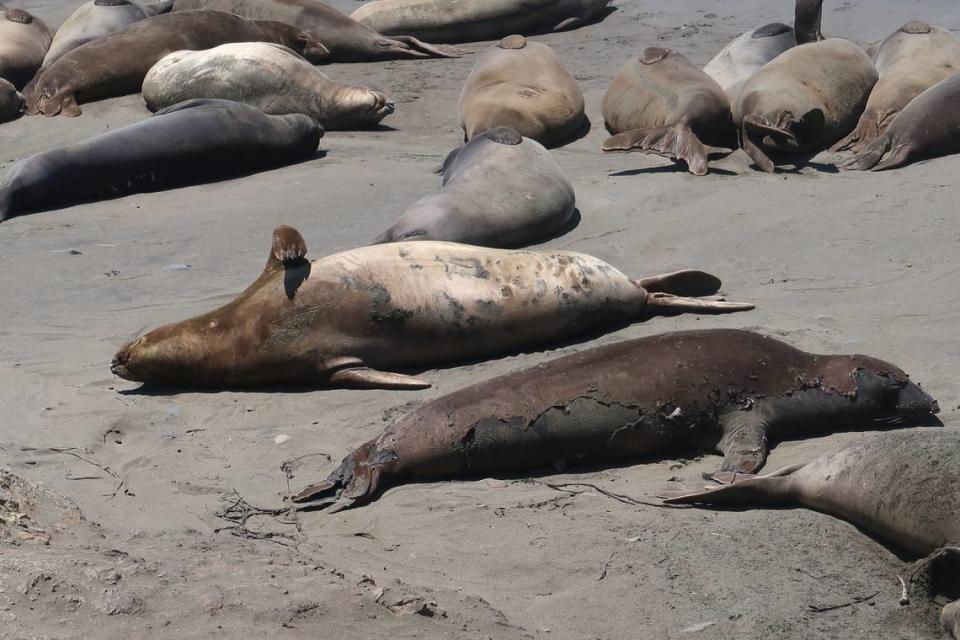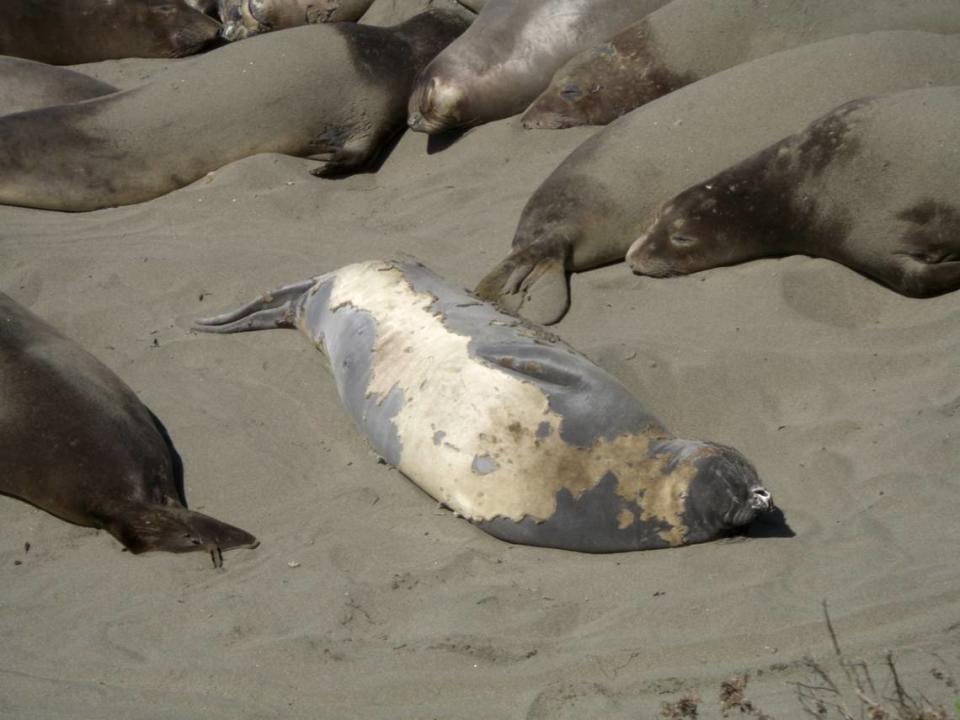More elephant seals are at SLO County beach than during breeding season. What are they doing?
May brings more elephant seals to the Piedras Blancas rookery north of San Simeon than the winter breeding season.
Visitors will see lots of seals, doing a lot of sleeping.
That’s because all the adult females and the not-yet-mature juveniles begin arriving in April and linger on the beach through June.
The females left the beach after giving birth and mating to get next year’s pups started in February and March.
They’ve been regaining weight lost while nursing babies so they are physically strong enough to support more pregnancies.
The juveniles left the beach to the breeding adults during the winter. They return in the spring, when the shores are calmer.
After resting and molting in May and June, the juveniles go to sea until they return for the fall haul-out.
Elephant seals are molting
All of the elephant seals will molt their skin during their stays.
The old brown skin and hair peels off in chunks, exposing new skin and hair underneath. Look for pearly gray seals next to brown and tan seals.
Check out the ones with skin curling off around the eyes and nose.
Old scars also start peeling back the molted skin. You may see a marked seal.
Check with a docent or contact Friends of the Elephant Seal online to report a marked seal. All marks are temporary, since they come off with the molted skin.
Female seals rest before migration
Some of the females are pregnant, but it’s not obvious to the eye.
The egg that fertilized during mating two months ago has suspended development during the short post-breeding migration. After molting, it implants in the uterine wall and begins developing into a pup.
The pregnant females will leave on their long migration, returning to the shores of San Luis Obispo County in January to give birth to their pups.
How do offshore wind farms affect marine animals?
Scientists are researching how offshore wind energy development could affect elephant seals and other marine mammals, as well as sea turtles, fish and marine bird species that call the ocean home.
The California Coastal Commission was briefed at its May 11 meeting by energy company representatives, scientists, state agency representatives, fishermen and others.
Ben Ruttenberg, director of Cal Poly’s Center for Coastal Marine Sciences, gave a presentation on gaps in knowledge about the deep ocean.
Little is known about the ocean at 4,000 feet, the depth at which floating wind turbines would be located 20 miles off the Central Coast.
Ruttenberg proposed using artificial intelligence and machine learning to assist with research.
Oceanography consultant Grace Chang gave a presentation on upwelling.
Brandon Southall of UC Santa Cruz, Duke University and Southall Environmental Associates presented background on the effects of sound on marine mammals and sea turtles, while Josh Adams of the U.S. Geological Survey spoke about leading a team studying the effects on marine birds.
Watch the video recording of that briefing at cal-span.org/meeting/ccc_20230511. Slides and videos are in the Presentations drop-down menu.


